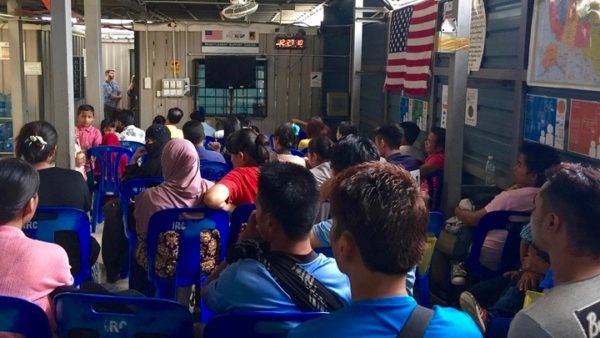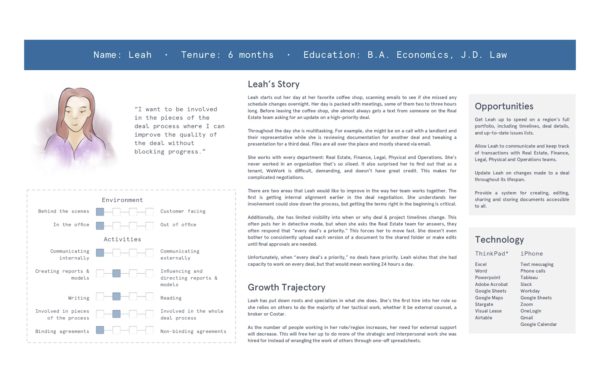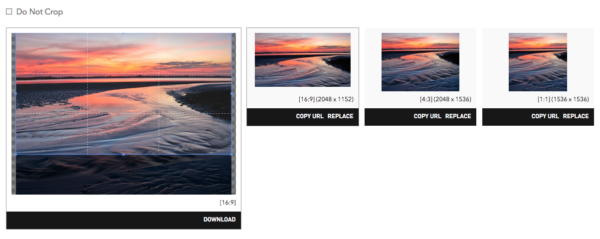The Journey of One Refugee
About the Project
The United States Digital Service is a startup at The White House, using design and technology to deliver better services to the American people. It is staffed with top technologists that serve term-limited tours of duty with the Federal government.
In 2016, my digital service team was asked to research how the different organizations involved in refugee processing work. The goal was to assess the current process, including the dependencies each organization has, so that we could understand the impact of these dependencies on organization motivation, efficiency and humanitarian relief.
My Role
Research Plan, Field Research Lead, Design Studio Lead, Prototyping
Read More
How a Small Troop of Techies Led the U.S. Syrian Refugee Surge
My Process
Understand
I designed and managed field interviews, contextual inquiries and observations in Bangkok and Kuala Lumpur so that we could define what the user needs, business needs and technology capacities were.
Define
We mapped the information gathered about the refugee determination and interview process, then highlighted the biggest opportunities to remove friction for the caseworker and refugee. Attitudes about the experience were captured as well.
Diverge
We zoomed back out and got out as many ideas as possible to remove the friction and duplicative work.
Decide
We combined ideas and then decided on a few to prototype and share with stakeholders and users.
Prototype
To get feedback quick, we opted to create provocations that illustrated the future experience with our services and products.
Understand
Field Research in Bangkok and Kuala Lumpur
We needed to better understand the ecosystem — the people, organizations, technologies and activities. Specifically, we wanted to learn what each organizations decision points were and how these decisions impact progress.
We also wanted to learn what was documented at each stage and how this data is used. Two other areas we explored were communication and scheduling. This is where we hypothesized design and technology could help.
Define
Mapping the Refugee Experience
When I was in Bangkok and Kuala Lumpur, I was able to observe almost every step of the process from when a person is determined to have refugee status to when they get on a plane to the United States. From these interviews and observations, I was extracted pain points and mapped them to the refugee journey. Then, I layered in what organization owns each part of the process and what activities they take to execute.

The biggest opportunities:
- Decrease the number of cases that become unreachable after hours of casework is completed, saving time and money;
- Remove routine paperwork from the interview process, allowing caseworkers to focus on admissibility and credibility of the case;
- Give caseworkers the tools they need to navigate cultural and language barriers, making each touch point with the applicant more efficient;
- Create standards for communication and appointment registration throughout the pipeline movement, reducing redundancy in rapport building and basic information collection.

Diverge
Sketching ways to remove the friction
We brainstormed and sketched solutions to solve some of the biggest pain points of the caseworkers, those that support the caseworkers and the refugees themselves.



Decide
Zen voting to narrow our focus
We decided to focus on three prototypes. The first would validate the technical feasibility of a mobile communication system. We believed this would decrease the number of refugees that become unreachable because it would make communication throughout the process easier and more consistent. However, we knew there were privacy and security concerns around mobile communications.
The second prototype would validate whether or not the integrity of the data would remain high if we allowed basic information to be input by the refugee in a prescreen during their appointment, reducing the time it took for a caseworker to conduct an interview and allowing caseworkers to focus on admissibility and credibility of the case.
The third prototype would validate whether or not video materials that prepped refugees for their interviews, removing cultural and language barriers between the caseworker and the refugee and making each touch point with the applicant more efficient.
Prototype
Using provocations to quickly validate ideas
Provocation One was used to validate the technical feasibility of a mobile communication system.




Provocation Two helped us validate a prescreen form and the concept that video materials could prep refugees for their interviews.











